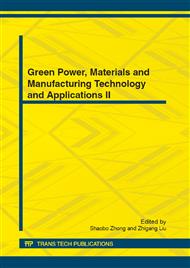To complete the experiment on occurrence, development, control and suppression of oil fire and explosion in the enclosed space, this paper developed a variety of simulation experiment platform and data test system of key parameters. This paper developed a series of simulation experiment bench, including simulation experiment bench of narrow enclosed space and volumetric enclosed space, see Fig. 1 to Fig. 2.this paper also developed data test system of key parameters, including the ultra-dynamic data acquisition and analysis system and the flame propagation speed test system, see Fig. 3 to Fig. 4. The experimental results show that these simulation experiment benches can provide comprehensive research conditions and support for oil fire and explosion simulation experiment under various conditions. Compared with the traditional fire sensor, the flame propagation speed test system has the characteristics of high sensitivity, zero false positives, and far detecting distance.
You might also be interested in these eBooks
Info:
© 2012 Trans Tech Publications Ltd. All Rights Reserved
[1]
Fan Weicheng, Li Shufen. (1994) Fire Reserch in China. In: Takashi Kashiwagieds. Fire Safety Science-Proceedings of the Fourth International Symposium. International Association for Safety Science 2:27-45
DOI: 10.3801/iafss.fss.4-27
Google Scholar
[2]
XU Sheng-li. (2000) Study on properties of pressure waves generated by steady flames in a duct. Journal of China University of Science and Technology 30(4):387-392
Google Scholar
[3]
XIE Bo et al. (2006) Study on active explosion suppression by powder in large-scale duct. Journal of China Coal Society 31(1):54-57
Google Scholar
[4]
XIE Bo et al. (2003) Experiment study on active explosion suppression by water Sprays in large-scale duct. Explosion and Shock Waves 23(2):151-156
Google Scholar
[5]
XIE Bo et al. (2006) Experiment study on the explosion suppression with passive water Sprays in large-scale duct. Journal of Experimental Mechanics 17(4):511-517
Google Scholar
[6]
LIU Xuan-ya, LU Shou-xiang, et al. (2003) The experiment study of the propagation of gas explosion flame influenced by water sprays. Fire Safety Science 12(1):11-18
Google Scholar
[7]
FAN Bao-chun. (2001) Experimental research on explosion suppression by inert particles. Experiments and Measurements in Fluid Mechanics 15(4):20-25
Google Scholar
[8]
WANG Zhi-rong, JANG Jun-cheng. (2005) The research development on industrial gas explosion in confined space. Industrial Safety and Environmental Protection 31(3):43-47
Google Scholar
[9]
LIN Bai-quan. (1999) Influence of barriers on flame transmission and explosion wave in gas explosion. Journal of China University of Mining &Technology 28(2):104-107
Google Scholar
[10]
SUN Cheng-wei. (1997) Recent progress of study on detonation propagation. Detonation Waves and Shock Waves 3:1-22
Google Scholar
[11]
CHEN Ai-ping. (1999) Experimental studies on the problems of flowing combustible gas explosion in pipeline. Explosion and Shock Waves 19(4):347-352
Google Scholar


